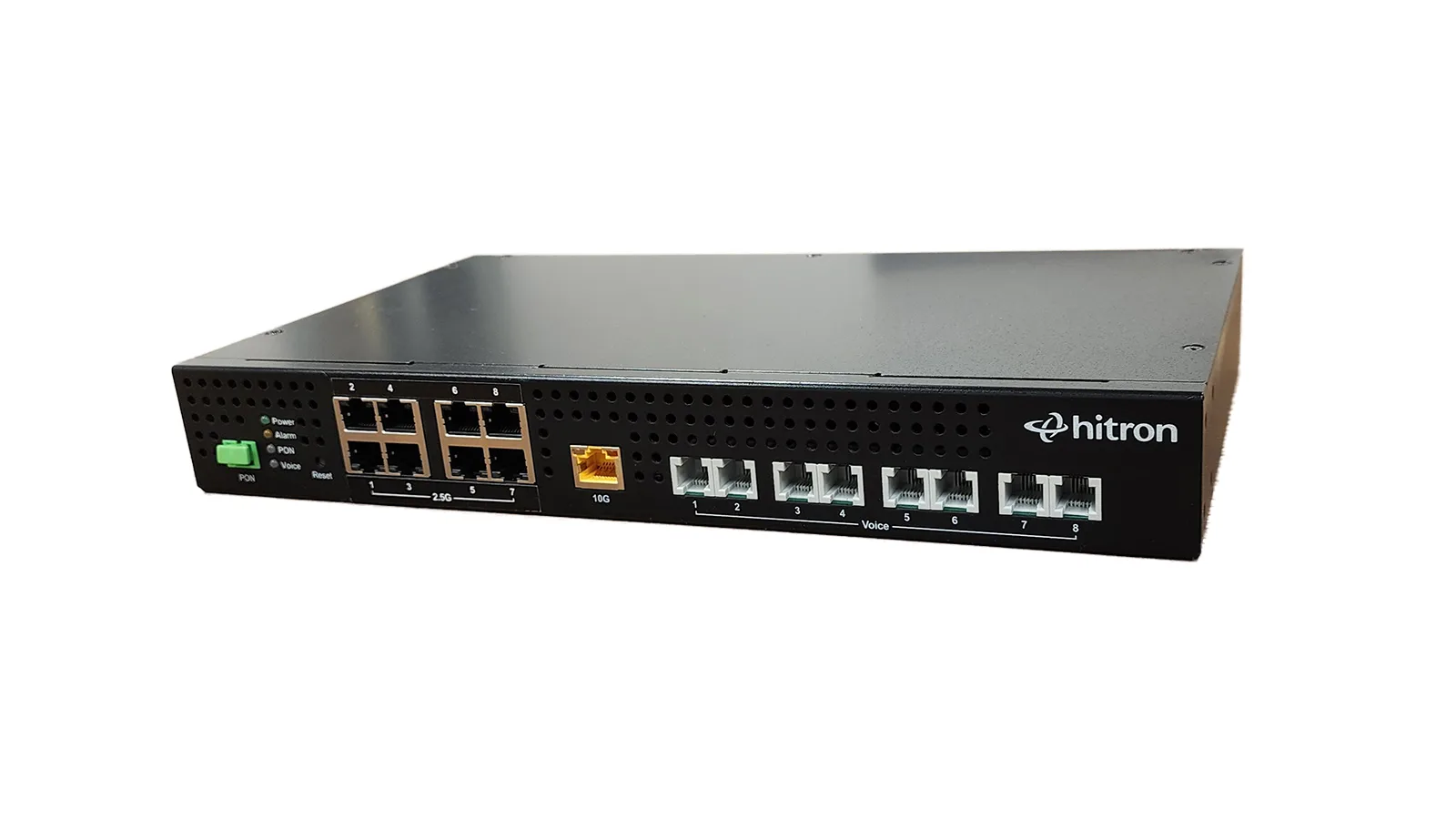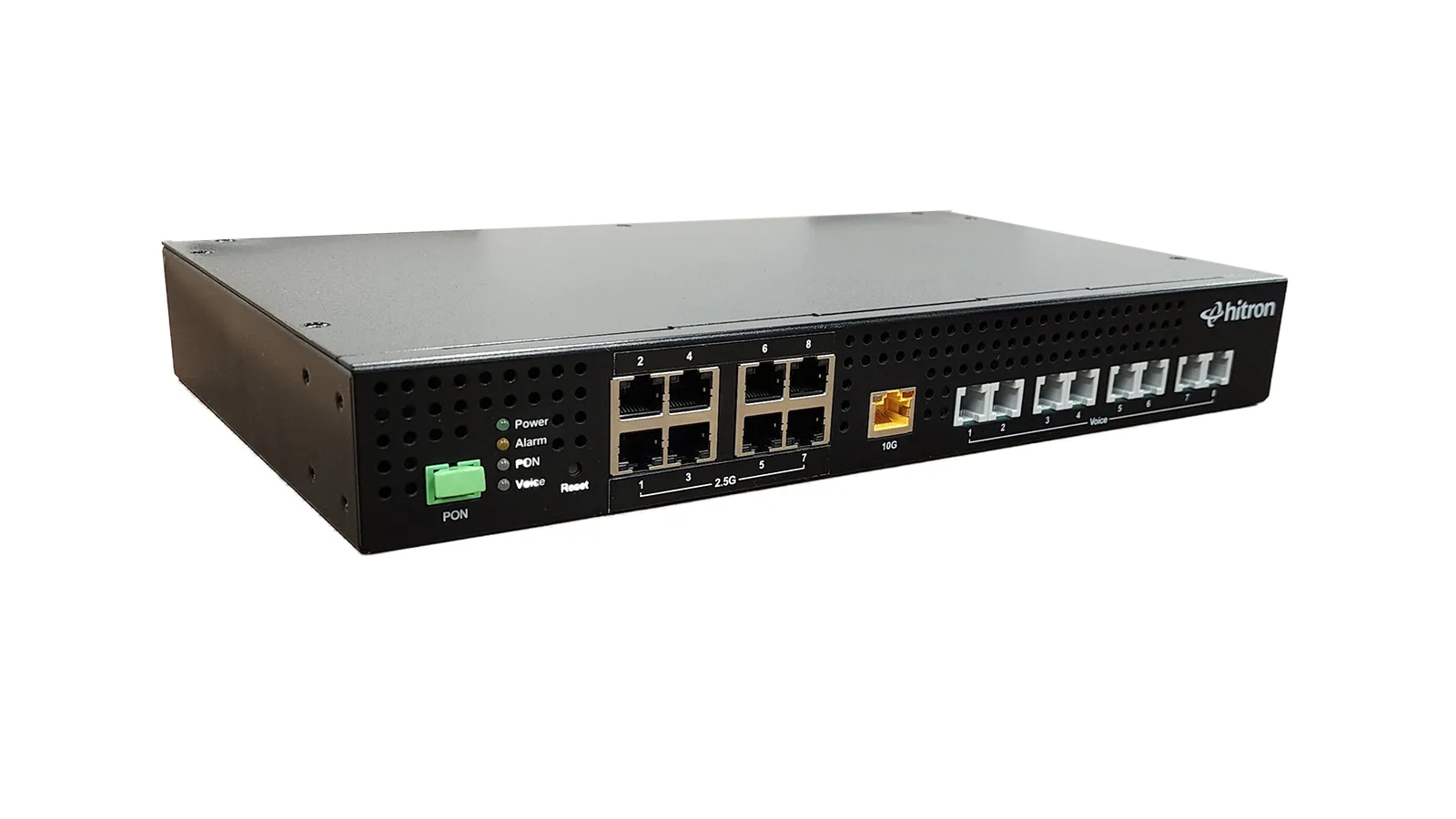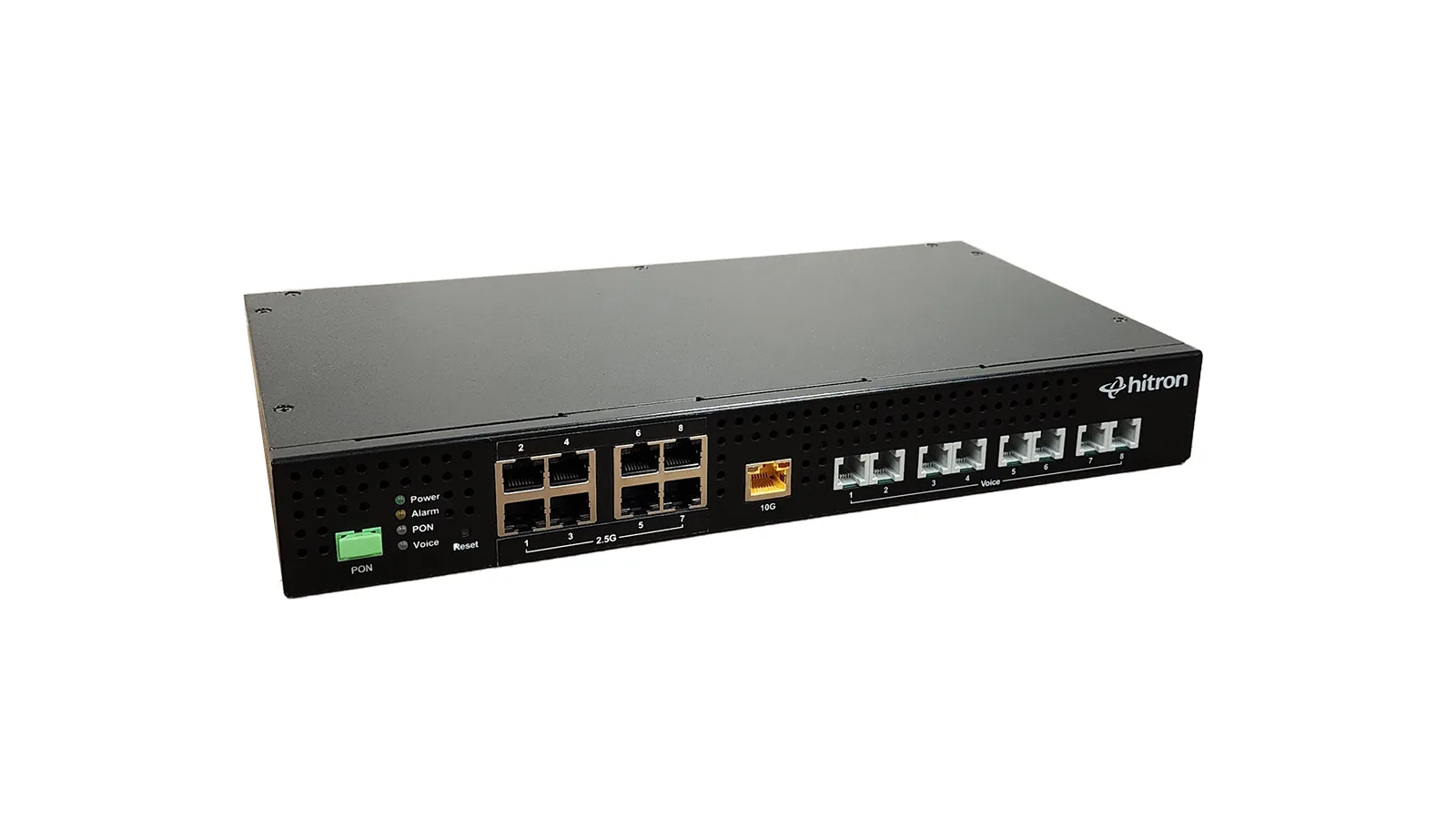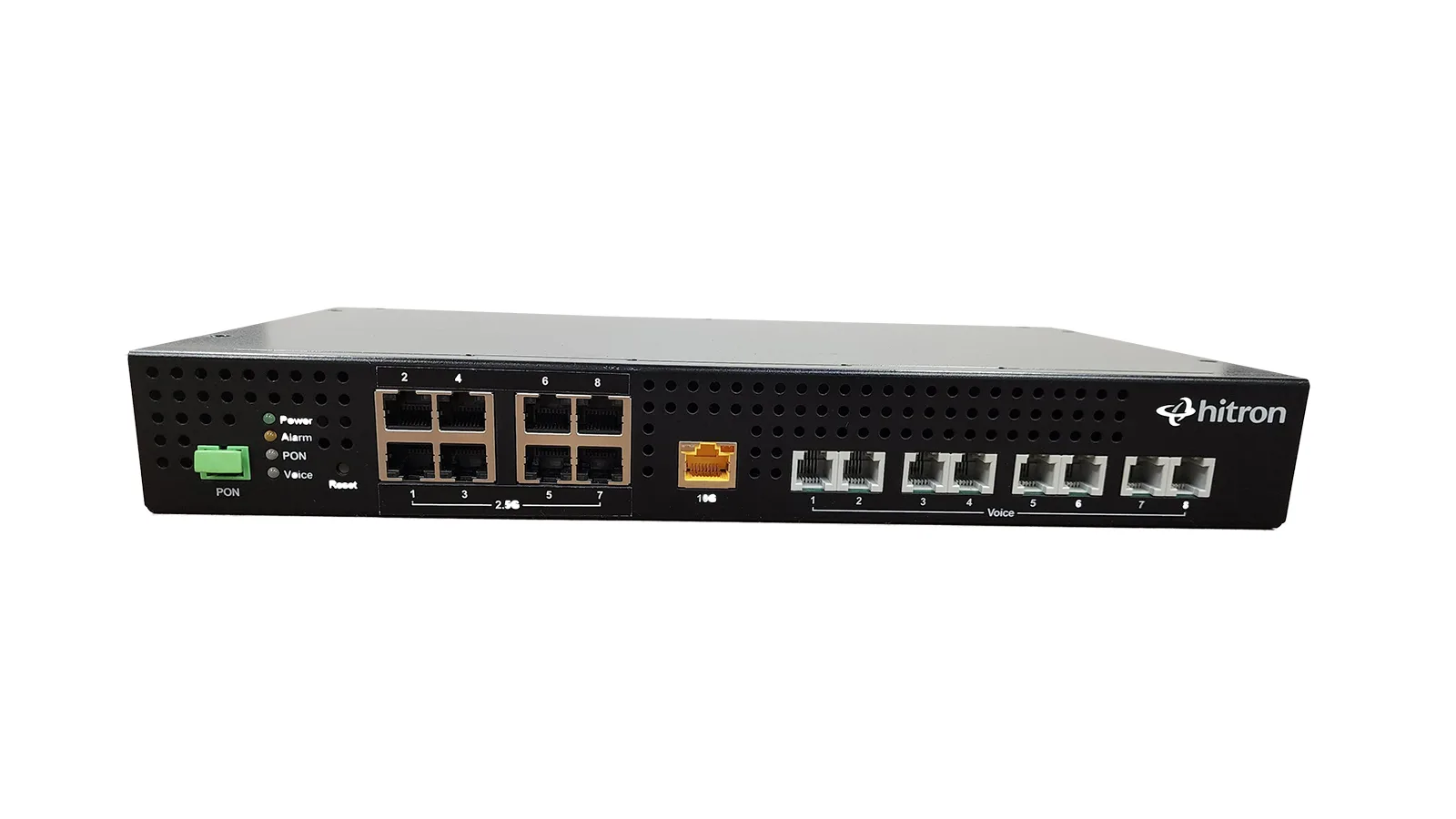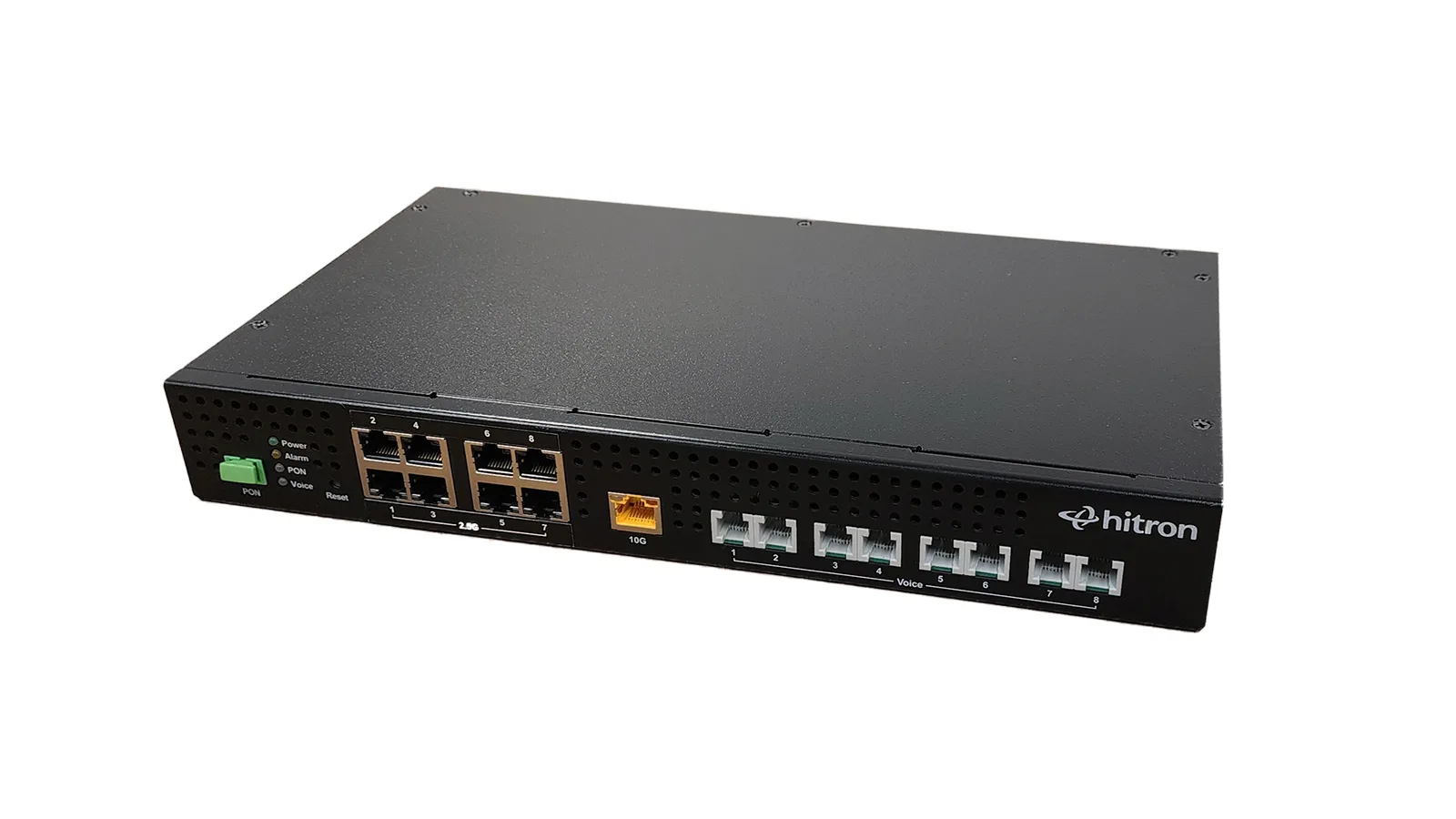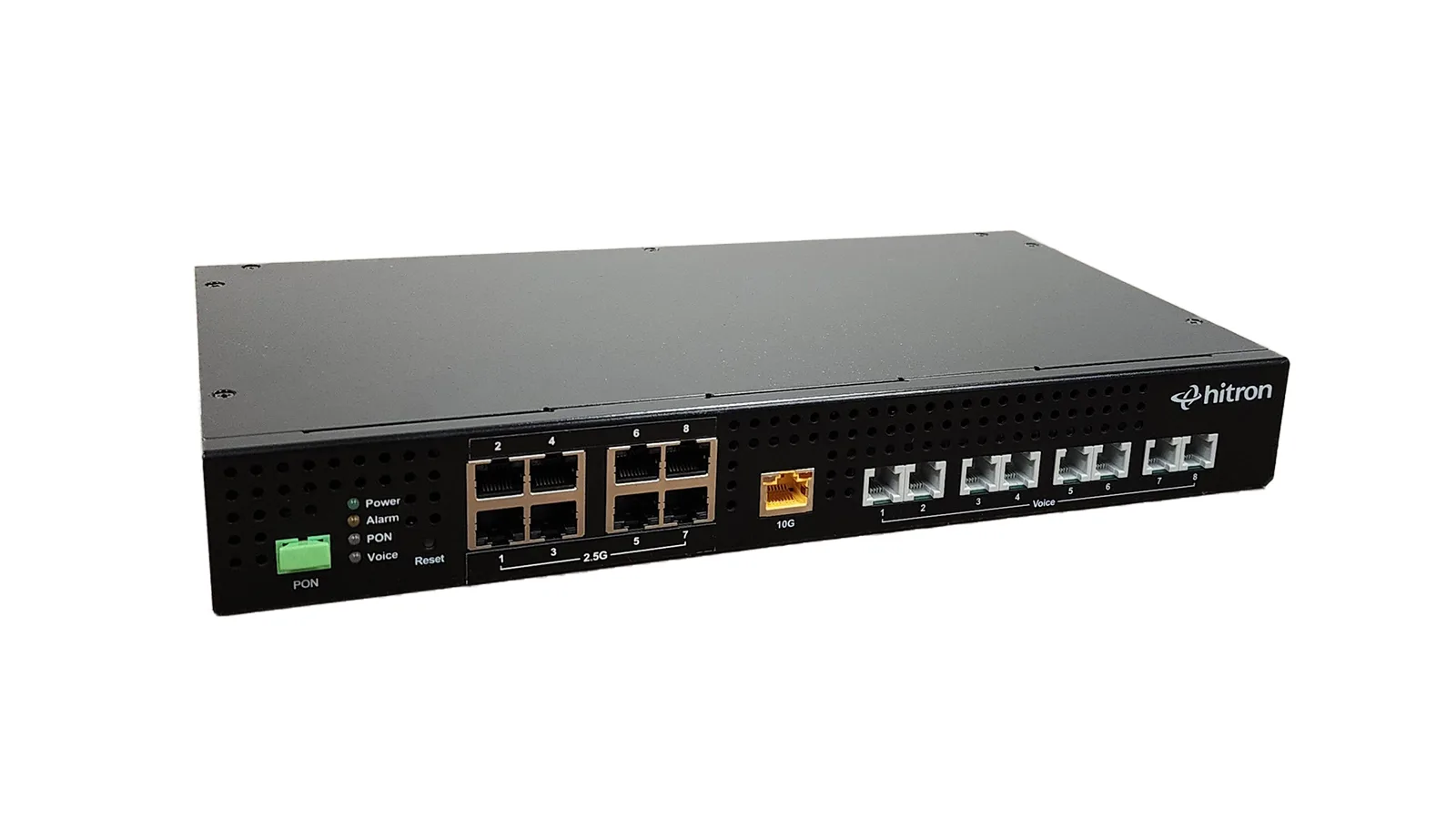Multi-PON Standard Compatibility
Supports 10G-EPON, XG-PON, and XGS-PON, enabling operators to deploy across diverse access environments.
8 Independent Ethernet Ports with Voice
Boasts one 10 GbE port plus eight 2.5 GbE LAN ports, each capable of serving distinct tenants or service tiers. Includes eight FXS voice ports for embedded telephony support.
DOCSIS DPoE 2.0 Provisioning Support
Seamlessly integrates with existing DOCSIS provisioning systems to simplify deployments and back-office operations.
Robust Diagnostic Capabilities
Features MAC loopback for advanced troubleshooting and proactive network maintenance.
Flexible Mounting & Commercial-Grade Resilience
Designed for both rack and wall installations, with an expanded temperature tolerance ideal for commercial environments.
Benefits for Service Providers
- Turnkey MDU/SMB Service Delivery: Delivers high-speed broadband, voice, and independent Ethernet services through one compact unit—ideal for tenants or business users in one building.
- Efficient Provisioning & Scalability: DPoE integration eases migration to fiber telecom platforms, while support for VLANs and traffic segmentation ensures scalable, differentiated service delivery.
- Simplified Maintenance and Reliability: MAC Loopback and carrier-grade hardware design reduce support overhead and enhance uptime—key advantages for multi-tenant deployment scenarios.
Key Specifications
- PON Interface: IEEE 802.3av 10G-EPON, ITU-T G.987.2 (XG-PON), ITU-T G.9807.1 (XGS-PON)
- Ethernet Ports: 1× 10GbE WAN + 8× 2.5GbE LAN ports (multi-tenant support)
- Voice Ports: 8× FXS RJ-11 ports for telephony
- Provisioning: DOCSIS DPoE 2.0 compliant
- Diagnostics: MAC loopback, IEEE 802.3ah OAM
- Management: TR-069, TR-369 (USP), advanced monitoring tools
- Design: Rack-mountable or wall-mountable, commercial-grade temperature range
*Please note that the NOVA2208 does not come with built-in provisioning support for the 8 Ethernet Ports. To configure each LAN port for individual apartments or customers within an MDU, Internet Service Providers (ISPs) will need to utilize a dedicated provisioning tool.
Documentation
A Complete Portfolio of Fiber ONT/ONU
Access Technology
XG-PON
XGS-GPON
XG-PON
XGS-GPON
XG-PON
XGS-GPON
XG-PON
XGS-GPON
XGS-GPON
Data Range
Ethernet Interfaces: (1G/2.5G/5G/10G)
One 10/100/1000
One 10/100/1000
One 10/100/1000
DOCSIS DPoE 2.0
Voice
---
Learn more about Fiber Optics, ONTs and ONUs
Do You Need a Modem with an ONT?
Before switching to fiber optic technology, it’s likely that you had a modem and router in your home. These devices gave you an Internet connection and Wi-Fi. These devices still work well for most people to get good Wi-Fi in their homes, on a Ethernet-over-coax...
What is the Difference Between OLT and ONT?
When you are setting up fiber Internet in your home or office, you come across an expansive list of abbreviations to understand. Among that list are things like PON, ONT, OLT, ONU, and more. Trying to understand these abbreviations and how they work together can be...
ONT: What It Is & How It Works
If you're getting fiber Internet service, you may hear your provider mention the term ONT. But what exactly is it—and do you need one? An ONT, or Optical Network Terminal, is a device that converts fiber optic signals from your Internet provider into Ethernet signals...
What is a Fiber Optic Router?
What exactly is a fiber optic router and how does it provide faster speeds? A fiber optic router has specific features to harness the lightning-fast speeds of fiber optic networks (Fiber-To-The-Home or FTTH) from your ISP. Your router or modem does not directly...

